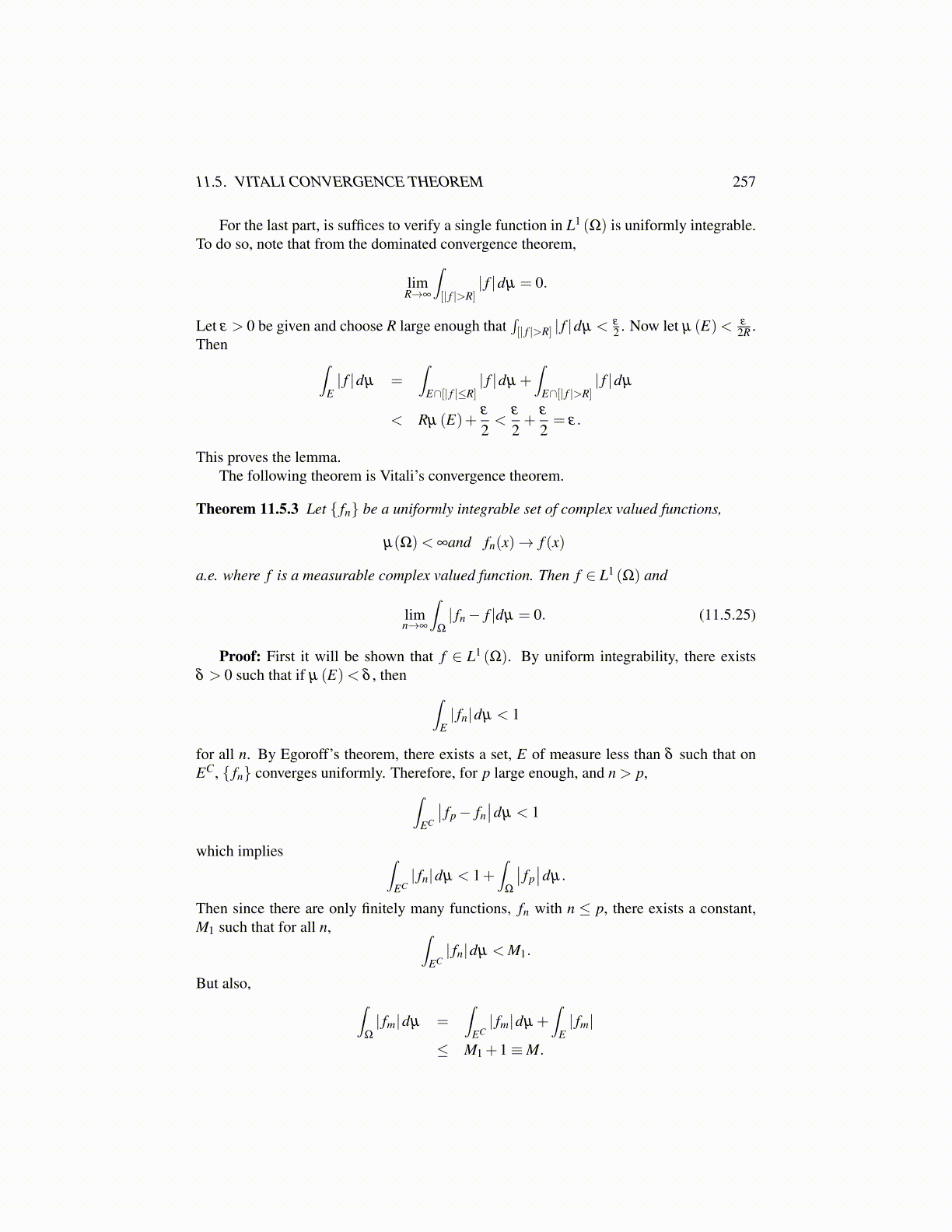
11.5. VITALI CONVERGENCE THEOREM 257
For the last part, is suffices to verify a single function in L1 (Ω) is uniformly integrable.To do so, note that from the dominated convergence theorem,
limR→∞
∫[| f |>R]
| f |dµ = 0.
Let ε > 0 be given and choose R large enough that∫[| f |>R] | f |dµ < ε
2 . Now let µ (E)< ε
2R .Then ∫
E| f |dµ =
∫E∩[| f |≤R]
| f |dµ +∫
E∩[| f |>R]| f |dµ
< Rµ (E)+ε
2<
ε
2+
ε
2= ε.
This proves the lemma.The following theorem is Vitali’s convergence theorem.
Theorem 11.5.3 Let { fn} be a uniformly integrable set of complex valued functions,
µ(Ω)< ∞and fn(x)→ f (x)
a.e. where f is a measurable complex valued function. Then f ∈ L1 (Ω) and
limn→∞
∫Ω
| fn− f |dµ = 0. (11.5.25)
Proof: First it will be shown that f ∈ L1 (Ω). By uniform integrability, there existsδ > 0 such that if µ (E)< δ , then ∫
E| fn|dµ < 1
for all n. By Egoroff’s theorem, there exists a set, E of measure less than δ such that onEC, { fn} converges uniformly. Therefore, for p large enough, and n > p,∫
EC
∣∣ fp− fn∣∣dµ < 1
which implies ∫EC| fn|dµ < 1+
∫Ω
∣∣ fp∣∣dµ.
Then since there are only finitely many functions, fn with n ≤ p, there exists a constant,M1 such that for all n, ∫
EC| fn|dµ < M1.
But also, ∫Ω
| fm|dµ =∫
EC| fm|dµ +
∫E| fm|
≤ M1 +1≡M.